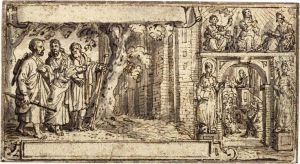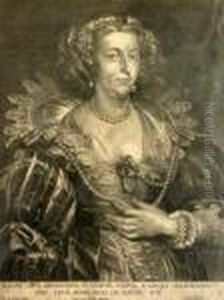Pieterde Jonghe Ii De Jode Paintings
Pieter de Jode II, also known as Pieter de Jode the Younger, was a Flemish artist born in Antwerp in 1606 into a family with a strong artistic lineage. His father, Pieter de Jode I, was an accomplished engraver and publisher, and his grandfather, Gerard de Jode, was a notable cartographer and engraver. This environment undoubtedly influenced Pieter II, who would go on to become a skilled engraver and draughtsman in his own right.
Pieter de Jode II trained under his father and became a master in the Antwerp Guild of St. Luke at a fairly young age, in 1628. He is known to have traveled to Paris and Rome, which was a common practice among artists of the time seeking to expand their skills and experience. In Rome, he became a member of the Bentvueghels, an association of mainly Dutch and Flemish artists working in Rome. It was customary for members of this group to adopt a nickname, known as a 'bent name'; however, Pieter II's bent name is not recorded.
Throughout his career, Pieter de Jode II produced a significant number of engravings. His works included portraits, religious subjects, and reproductions of paintings by other artists. He was particularly noted for his skill in portraying textures and his ability to translate the essence of a painting into the medium of engraving. His prints were widely disseminated, contributing to the spread of artistic styles and ideas across Europe.
Pieter's works were part of a larger collection known as the 'Theatrum Pictorium', often considered one of the first printed art galleries, which was initiated by David Teniers the Younger. This collection included engravings after Italian masters and was intended to make the works of these artists more accessible to a broader audience.
The latter part of Pieter de Jode II's life is less documented, and it is generally believed that his output declined. He passed away in Antwerp in 1674. While Pieter de Jode II may not have achieved the same level of fame as some of his contemporaries, his contributions to the world of engraving and printmaking have been recognized by art historians, and his works are held in various museum collections around the world.

